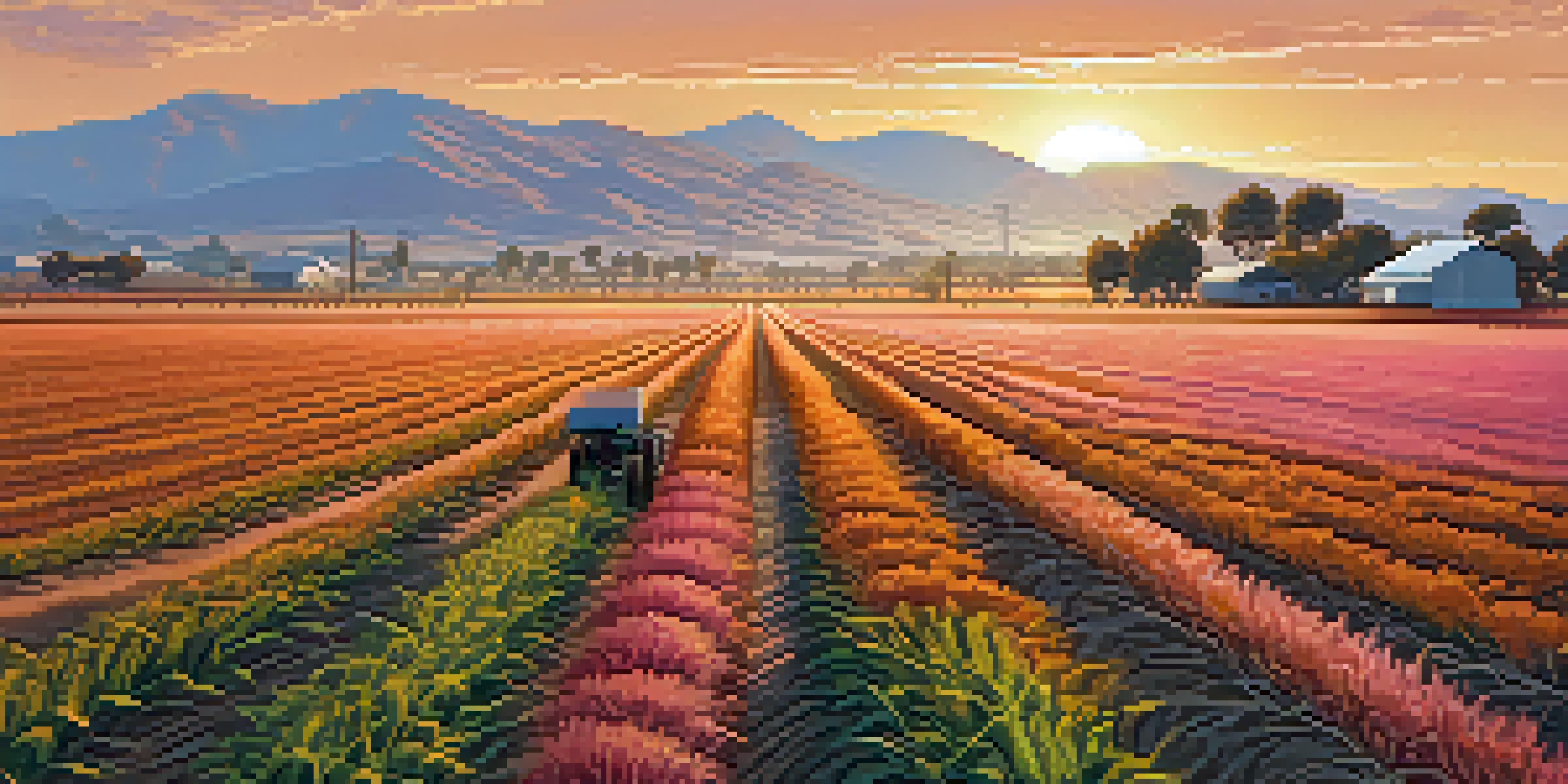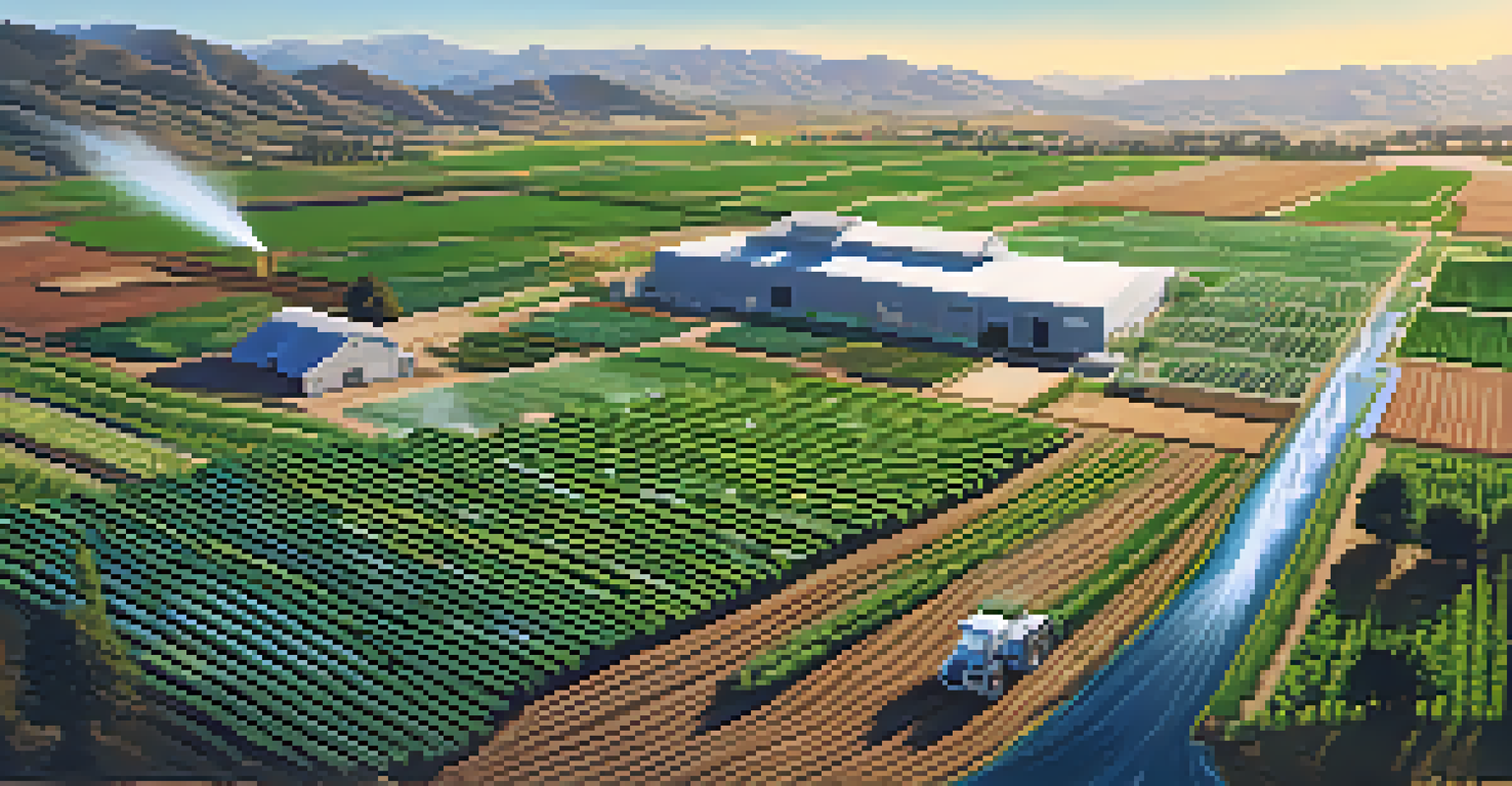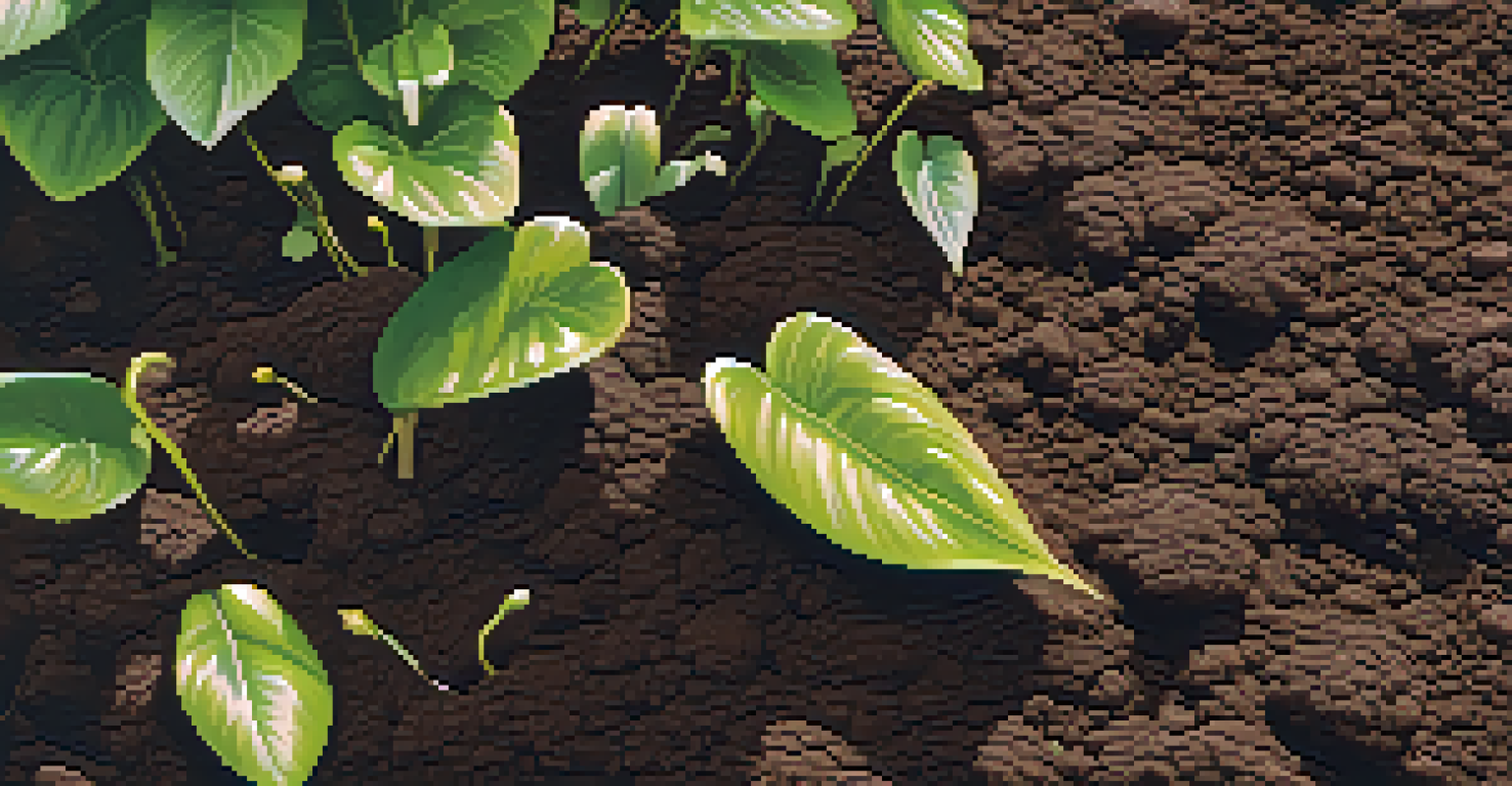Water Management Strategies in California's Agriculture

Understanding California's Water Challenges for Agriculture
California's agriculture thrives in a region often labeled as a desert, making water management critical. The state's unique climate, characterized by dry summers and variable rainfall, poses significant challenges. Farmers must navigate these water shortages, especially during drought periods, which have become increasingly common in recent years.
Water is the driving force of all nature.
With agriculture being a major economic driver in California, the pressure to sustain crops while conserving water is immense. This situation is further complicated by California's growing population and the accompanying demand for water resources. The need for effective strategies becomes not just essential, but a matter of survival for many farms.
Understanding these challenges is the first step in developing effective water management strategies. By recognizing the intricacies of California's water supply and the agricultural demands, stakeholders can begin to implement solutions that not only ensure crop health but also promote sustainability.
Innovative Irrigation Techniques Enhancing Water Efficiency
One of the most effective ways to manage water in agriculture is through innovative irrigation techniques. Methods like drip irrigation deliver water directly to the plant roots, minimizing waste and maximizing efficiency. This targeted approach helps farmers use less water while still maintaining healthy crops.

Additionally, advancements in technology, such as soil moisture sensors, allow farmers to monitor their fields in real-time. This data-driven approach enables precise watering only when necessary, reducing over-irrigation. As a result, farmers can conserve water and improve crop yields simultaneously.
Innovative Irrigation Techniques
Adopting methods like drip irrigation and soil moisture sensors can significantly enhance water efficiency in California's agriculture.
By adopting these innovative irrigation techniques, California's farmers can significantly enhance their water management strategies. As they embrace technology, they not only address immediate water challenges but also contribute to long-term sustainability in the agricultural sector.
Rainwater Harvesting: A Sustainable Water Source
Rainwater harvesting is gaining traction as a sustainable water management strategy in California's agriculture. By capturing and storing rainwater, farmers can create a supplemental water source to irrigate their crops. This method not only reduces dependency on traditional water supplies but also helps alleviate the impact of drought conditions.
The best way to predict the future is to create it.
Farmers can implement systems to collect rainwater from roofs, fields, and other surfaces, which can then be used during dryer months. This practice not only promotes conservation but also enhances resilience against fluctuating water supplies. It's a win-win for both the environment and agricultural productivity.
As more farmers adopt rainwater harvesting, it becomes clear that this strategy offers a practical solution to water scarcity. By integrating this approach into their operations, they can contribute to a more sustainable agricultural future while ensuring their crops receive the water they need.
Soil Management Practices to Optimize Water Retention
Effective soil management is crucial for optimizing water retention and minimizing irrigation needs. Practices such as cover cropping and no-till farming improve soil health, allowing it to absorb and hold moisture more effectively. Healthy soil acts like a sponge, making it easier for crops to access water during dry spells.
Additionally, organic matter, such as compost, can enhance soil structure and water-holding capacity. By enriching the soil, farmers create a more resilient ecosystem that can withstand drought conditions. This approach not only conserves water but also promotes sustainable farming practices.
Drought-Resistant Crop Selection
Choosing drought-resistant crop varieties helps farmers reduce water usage while maintaining productivity amidst water scarcity.
Investing time and resources into proper soil management can pay off significantly. As farmers learn to work with their soil's natural properties, they can reduce their water usage while maintaining healthy and productive crops.
Crop Selection: Choosing Drought-Resistant Varieties
Selecting drought-resistant crop varieties is an essential strategy for water management in California agriculture. These varieties are bred specifically to thrive in arid conditions, requiring less water while still producing high yields. By choosing crops suited for the environment, farmers can mitigate the effects of water scarcity.
For instance, certain types of sorghum and millet are known for their resilience against drought. By incorporating these plants into their rotations, farmers can diversify their crops and reduce their reliance on water-intensive varieties. This strategic selection not only conserves water but also enhances the farm's overall resilience.
As climate change continues to impact weather patterns, adopting drought-resistant crops becomes increasingly vital. Farmers who embrace this strategy are better equipped to sustain their livelihoods while adapting to the reality of a changing climate.
Community Collaboration in Water Management Efforts
Community collaboration plays a pivotal role in enhancing water management efforts in California's agriculture. Farmers, local governments, and organizations can work together to share resources, knowledge, and best practices. This collective approach fosters innovation and creates a stronger support network for addressing water challenges.
For example, water-sharing agreements among neighboring farms can maximize water use efficiency. By pooling resources, farmers can ensure that water is distributed where it's needed most, reducing waste and improving overall productivity. This sense of community not only benefits individual farms but also strengthens the agricultural sector as a whole.
Community Collaboration Benefits
Collaborative efforts among farmers and local organizations foster resource sharing and innovation in water management practices.
Ultimately, when stakeholders collaborate, they can create comprehensive water management strategies that are more effective and sustainable. The power of community can lead to innovative solutions that address the unique challenges facing California's agriculture.
Government Policies Supporting Sustainable Water Practices
Government policies play a crucial role in shaping sustainable water management practices for California's agriculture. Initiatives aimed at promoting water conservation, such as grants for efficient irrigation systems, help farmers implement innovative solutions. These policies not only provide financial support but also encourage the adoption of sustainable practices.
Furthermore, regulations governing water usage ensure that resources are allocated fairly among agricultural stakeholders. By setting benchmarks and guidelines, the government can help maintain a balance between agricultural needs and environmental protection. This regulatory framework is essential for long-term sustainability.

As California continues to face water challenges, strong government support will be vital. By fostering an environment that encourages sustainable practices, policymakers can help secure a resilient agricultural future for the state.
The Future of Water Management in California's Agriculture
Looking ahead, the future of water management in California's agriculture will rely heavily on innovation and adaptability. As climate change continues to alter precipitation patterns, farmers will need to be proactive in adopting new technologies and practices. The willingness to embrace change will be essential for survival in the face of uncertainty.
Moreover, ongoing research into water-efficient farming techniques and drought-resistant crops will play a significant role in shaping agricultural practices. As scientists and farmers collaborate, they can develop solutions that not only improve water usage but also enhance crop resilience. This partnership will be key to navigating future challenges.
Ultimately, the path forward will require a combination of individual actions and collective efforts. By prioritizing sustainability and innovation, California's agriculture can thrive even in the face of water scarcity, ensuring food security for future generations.